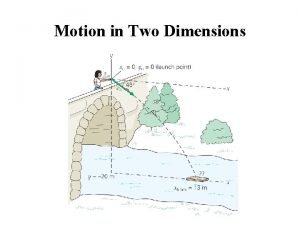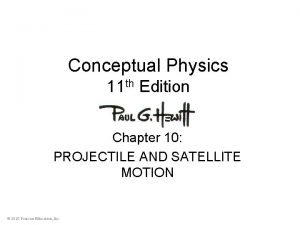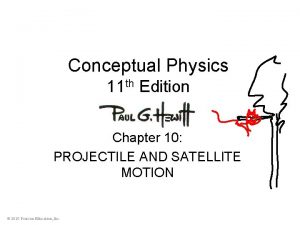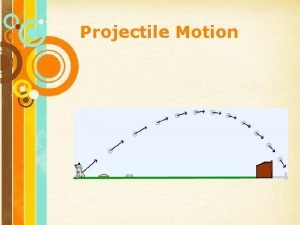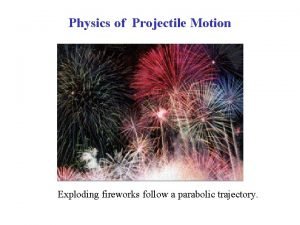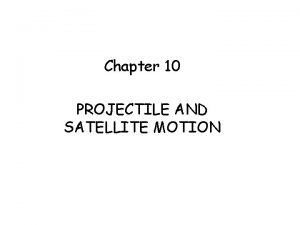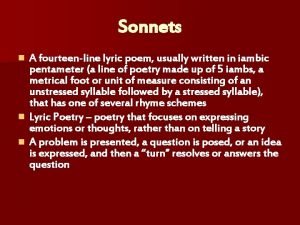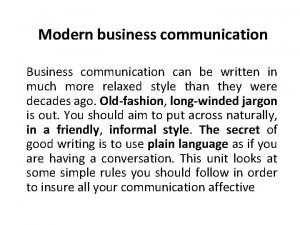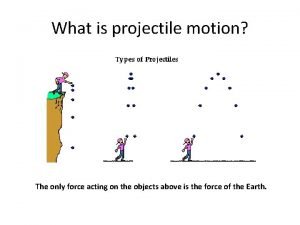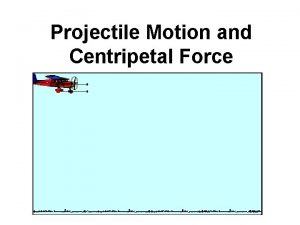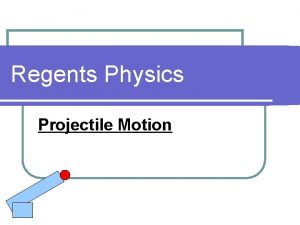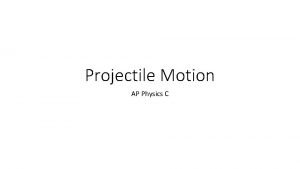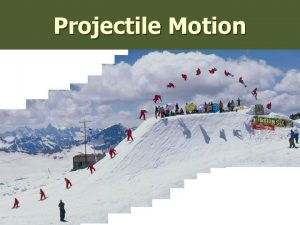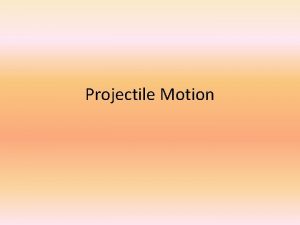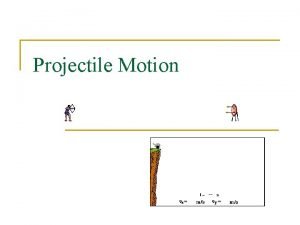Vectors and Projectile Motion Vectors are usually written











- Slides: 11

Vectors and Projectile Motion

Vectors are usually written as an arrow. It represents a quantity with a direction. Example: 50 mph East or 10 mph West Vectors can be combine by adding or subtracting them. This is called the resultant vector, or net vector. Example: How fast was the plane going if it was traveling 50 mph against a head wind of 10 mph? 50 mph East 10 mph West

Resultant or Net Vector 50 mph E 40 mph E 50 mph E 10 mph W 25 mph E 75 mph E Subtract when arrows are opposite each other. Add when arrows are in the same direction.

What if the vectors are perpendicular to each other? We can use the Pythagorean theorem: a 2 + b 2 = c 2 (20)2 + (60)2= c 2 400 + 3600 = 4000 = 63. 25 mph Which direction? 20 mph S a South East b 60 mph E

Just show the resultant vector with an approximate magnitude and the proper direction.

Projectile Motion and Gravity Projectile motion is a curved path that objects take because they are pulled down by gravity. Gravity pulls all objects toward the earth. The faster they are projected (shot out) the farther they will go but will all curve toward the earth eventually.

If there was no gravity the cannon ball would continue in a straight line.

Forward velocity Gravitational In what direction pull will the resultant vector be? This happens every moment and the overall shape of the line is a curve

Orbiting objects An orbiting object has enough forward velocity so that by the time it starts to curve and fall toward the earth, the earth is curving as well. This means it never quite gets to the ground. If the forward velocity of an orbiting object begins to slow down. It will eventually fall into the earth.

Gravity The strength of gravity depends on two things: 1. The mass of the objects (m=mass) 2. The distance between them (r=radius is like distance)

Centripetal Force Centripetal force is a force that pulls you toward the center of a curved or circular path. It is what causes cyclists to lean in as they go around a curve. Centripetal force takes different forms like: • When a car curves around a corner the friction between the car and pavement acts like centripetal force. • The gravitational force that holds the planets in orbit is centripetal force. • The string that holds a ball as you swing it in a circle is centripetal force.
 Insidan region jh
Insidan region jh Projectile motion displacement formula
Projectile motion displacement formula Conceptual physics chapter 10
Conceptual physics chapter 10 Chapter 10 projectile and satellite motion
Chapter 10 projectile and satellite motion Projectile motion ppt template
Projectile motion ppt template Projectile fireworks
Projectile fireworks Chapter 10 projectile and satellite motion tossed ball
Chapter 10 projectile and satellite motion tossed ball A fourteen line lyric poem
A fourteen line lyric poem Focus on modern business communication
Focus on modern business communication Kinematics 2d formulas
Kinematics 2d formulas Only force acting on a projectile
Only force acting on a projectile Symmetrical projectile motion
Symmetrical projectile motion

